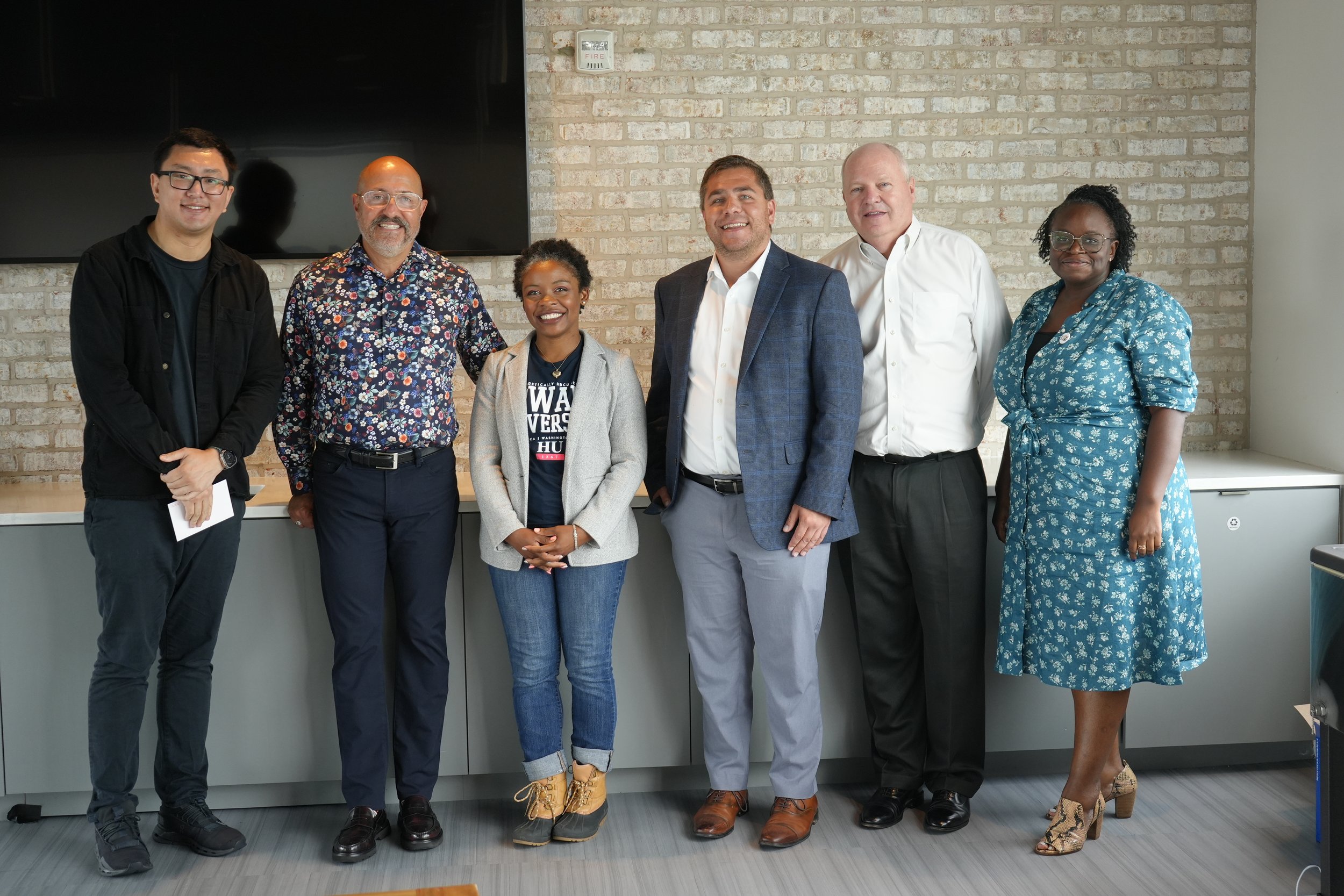S6: Community
Engagement
July 12th, 2024
Location: Skyline 609
Led by: Dailong, Ma, Associate AIA & Fijoy, Fisiy, AIA
The session provided an insightful exploration of community engagement and its importance in fostering cooperation and active participation between all stakeholders. We examined the critical role architects play in achieving engagement with communities that is both effective and equitable. Through presentations, a panel discussion and hands-on workshop, we learned about different strategies for involving the community in the design and planning process. The session also highlighted the benefits of successful engagement and the lessons learned from past challenges, enhancing our understanding of effective community interaction.
Act 1: Why Community Engagement
David A. Rubin, PLA, FASLA, FAAR
David A. Rubin, principal of David Rubin Land Collective, specializing in landscape architecture, urban design, and planning, champions an empathy-driven design process, setting standards in the field. He advocates for creating beloved spaces that promote community engagement, safety, inclusivity in design processes, collaboration, and information sharing with constituents. Drawing on his background in art history, David aligns his projects with stakeholder engagement, fostering neighborhood vitality through art and community-driven initiatives. He provided a notable example with the redesign of Franklin Park in Washington, DC. This project restored the 100-year-old park to its vibrant grandeur, enhanced stormwater management, and ensured longevity with sustainable materials. He integrated personal narratives and poetry to demonstrate how landscape design can be a powerful, self-identifying political act, addressing biases through active listening and trust-building. David emphasized the value of active engagement, prioritizing quieter voices as much as the loudest in the room. He illustrated how his approach combines artistic vision with practical solutions for lasting impact and inclusivity in urban spaces. By fostering empathy and serving underprivileged neighborhoods, his work aims to empower communities to shape their own stories and identities, including those who self-identify with the park, such as the unhoused, in meaningful ways.
David A. Rubin, PLA, FASLA, Mark Hamala (DC Zoning Code Specialist), Bill Spack, AIA & Anna McCorvey, AIA
In the second act of the session, we heard from two distinguished speakers: Mark Hamala, a senior zoning specialist at the DC Department of Building, and Bill Spack, the founding principal of CGS Architects. Mark shared his experiences with various residential densification projects, illustrating how city goals can align with neighborhood identities through active community involvement. He highlighted the advantages and challenges of community engagement in local projects, emphasizing its crucial role in achieving successful outcomes when started early in the process.
Bill Spack followed with insights into CGS Architects’ approach to community engagement, particularly in their work on institutional buildings like recreation facilities, schools, and universities. He stressed that their engagement strategies are not one-size-fits-all but are instead tailored to the unique needs of each community. He explained that due to the broad and diverse constituents involved in these projects, a tailored approach is essential to ensure all voices are heard and considered.
After the presentations, all the speakers participated in a panel discussion, addressing a wide range of question prepared by the scholars. They discussed the importance of removing barriers to participation. They emphasized the need to identify and address the concerns of all stakeholders and to provide a framework that ensures community members see themselves reflected in the process, ultimately leading to more successful and inclusive projects. The discussion delved into strategies for increasing community involvement, particularly in cases where participation is typically low. The speakers suggested reaching out to local community leaders and engaging with people at events they already attend as effective methods. They also shared approaches for involving community members who express resistance to proposed projects. Additionally, the panelists touched on the return on investment (ROI) for clients, explaining how community feedback can lead to program adjustments that drive economic benefits for all stakeholders involved.
Overall, the session provided a comprehensive understanding of the importance of community engagement and offered practical strategies for achieving it effectively.
Act 2: Perspectives and Approaches to Community Engagement
In the final session, Anna McCorvey, an Architect in DC and Senior Equitable Development Manager for the 11th Street Bridge Park project, shared insights on fostering community engagement and community advocacy through design. Anna discussed the history of community design centers in the U.S. and their planning process. Over the years, the Anacostia neighborhood has undergone development challenges and home displacements, around where the 11th Street Bridge Park project is located. Through the efforts of residents within the community fundraising, block parties, and recreational events, it has transformed into a vibrant community. Active community engagements have allowed constituents to participate, voice concerns, secure sponsorships, and organize activities and food vendors by fostering community spirit and drawing attention to the area. Anna then led a workshop, where we broke into groups to explore community engagement using a case study ‘Welcome to Magnolia’ as an example. We learned how to identify stakeholders: individuals, groups, or organizations impacted by, interested in, or influenced by a project. These stakeholders might include users, affiliates, businesses, and government officials, each capable of shaping conversations around new project developments, either in favor of or against change.






